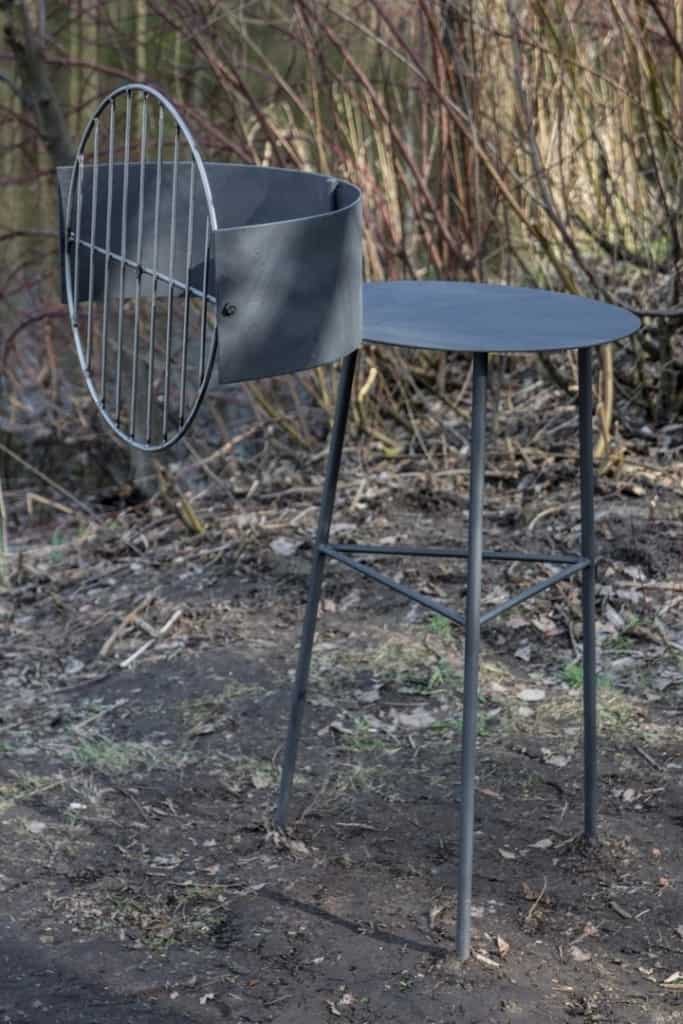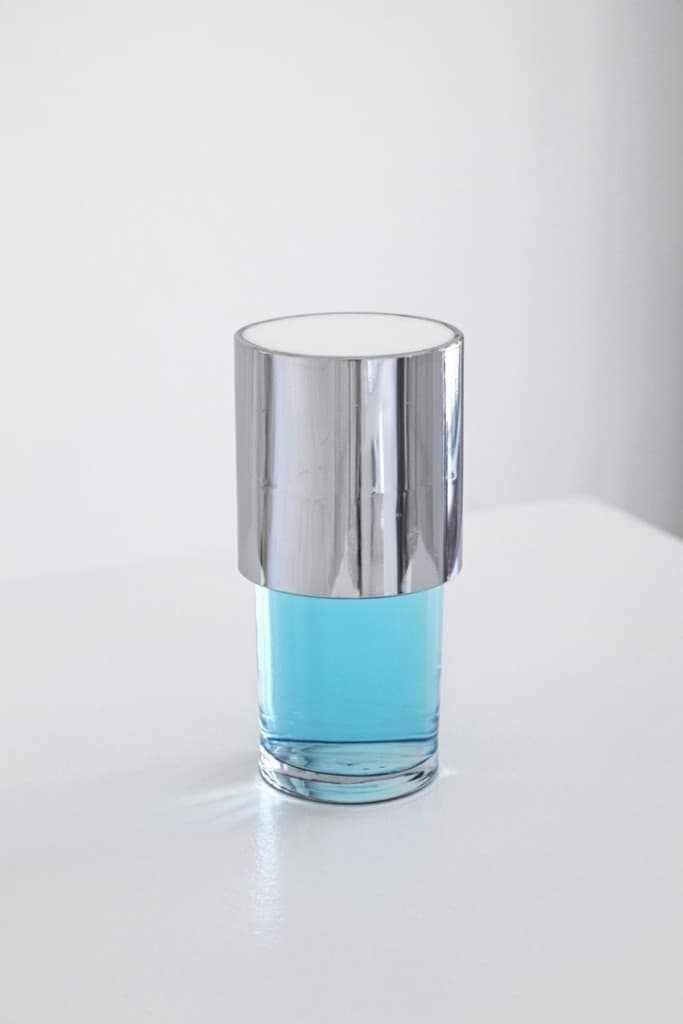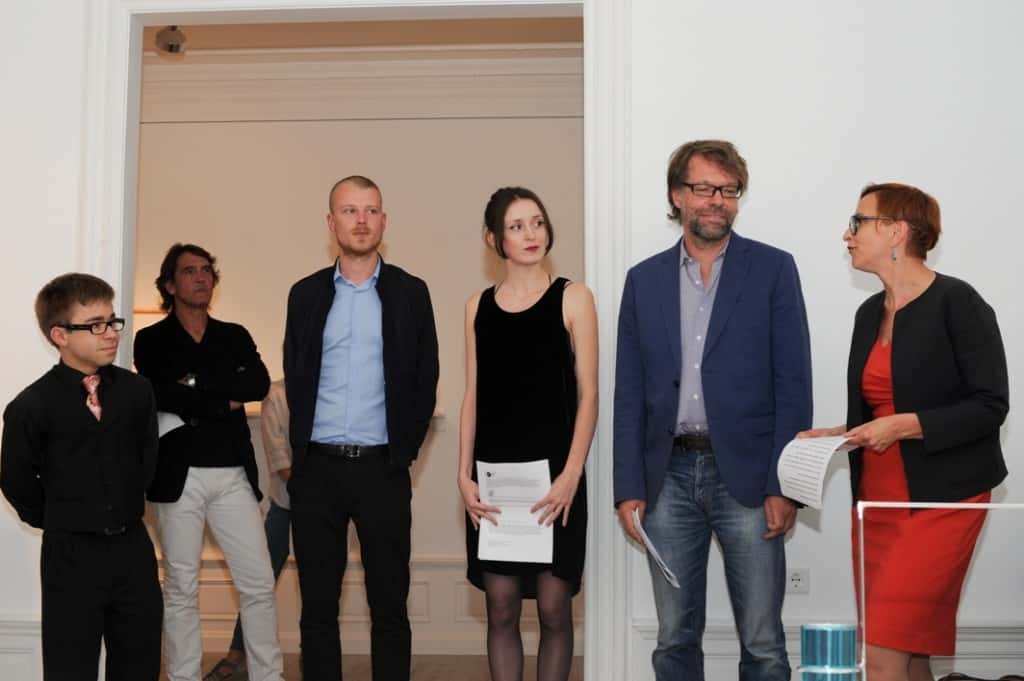According to the theory of proxemics, drawing from psychology and anthropology, human relations occur in different culturally defined distances. Krystian Truth Czaplicki has begun his activity from a secure distance in the public space which allows for anonymity dictated by the nature of his artistic intervention. Czaplicki gradually allowed the viewer to approach him. The viewer that became less accidental and unwitting because of coming closer to the artist. As a result, auto-analysis and intimate confessions but most of all observation of the nearest surroundings have become the foundation of his recent exhibition entitled A Displaced House presented in the Polish Institute in Düsseldorf.

Krystian Truth Czaplicki, Katowice 2013, photo Edyta Jezierska (Katowice Street Art Festiwal), courtesy the artist and BWA Warszawa
This artist from Wrocław has already gained popularity during his studies at the Academy of Fine Arts in Wrocław. He was recognized for his sculptural interventions in the urban space. He was called a street artist then. He is trying to fight hard not to be put in this category because for him it is associated with naive and flamboyant aesthetics. His tiny and minimalistic sculptural interventions were close to the land art poetics and they appeared in places where they seemed to be in their natural surroundings. The artist gave them the quality of temporariness, he did not return to his works, allowing them to wear out, to be taken away, to vanish in the crowd like he did. His works re-interpreted the places that they appeared in, balancing on the edge of independence and site specific installations like a barbecue (Katowice 2013) that emerged at the side of the pond – in a meeting place. At a closer inspection, it turned out to be completely impractical. It became a parody of itself and a bitter comment on Polish habits. Like a packet of cigarettes in a pool (Wrocław 2012) or a deformed hanging frame (Warszawa 2012); at other times it is a stand that enables to have a beer with a friend in the fresh air (Wrocław 2013). These works have a performative element – they invite to take action which, with the use of Truth’s objects, becomes a vivid comment on or even often a criticism of reality – in the case of the hanger it is a protest against a ban on drinking alcohol in the public space.

Krystian Truth Czaplicki, Wrocław 2013, photo Edyta Jezierska (Przegląd Sztuki Survival ) courtesy the artist and BWA Warszawa

Krystian Truth Czaplicki, RYSY, Wrocław 2012, photo Edyta Jezierska (Out of Sth, BWA Wrocław) courtesy the artist and BWA Warszawa

Krystian Truth Czaplicki, RYSY, Wrocław 2012, photo Edyta Jezierska (Out of Sth, BWA Wrocław) courtesy the artist and BWA Warszawa
Since 2012 Truth has gradually allowed the viewer to come even closer and to limit the space surrounding his works. He relates to his story and place in society. Installations reveal Truth’s sentiment to his local sphere and – as he himself admits – he feels best in Wrocław. In fact, he feels best in a district that he grew up in and in which he still lives. Streets that he knows like the back of his hand became an inspiration to a series of sculptures Cracks (2012) which are formally connected to the Krzyki landscape and small architecture of the district’s backyards. Painterly sculptures, well hidden thanks to their mimetic form, may remain unnoticed by a casual viewer. Clear invocation to the father of minimalism Donald Judd and his works form the seventies is visible in a total impracticality of the placed object and in their strong relation to the context.
The Challenging was the first exhibition of the artist in a closed space, in BWA Warszawa Gallery. Inspired by a song by the Doors of the same title, it was a play with the viewer. By equipping him in the lyrics of the song, Truth encouraged the viewer to put together pieces of a puzzle – a series of objects prepared in the gallery. None of the simple sculptures had a title, but you could attribute a fragment of the text to each of them. Czaplicki created a narration relating to his past. The works, burdened with the artist’s memories, gained a personal overtone without naive sentimentalism, but by intuitive work with a found object. It was possible to look at yourself in one of the sculptures – a mirror made of Plexiglas glued to canvas. The image reflected in this mirror was seemingly real, but it was enough to take a step back for the image to become drastically deformed. Thus, Czaplicki does not move back and at the same time he shows us the object of his next works.
The shift appeared not only in the artist’s interests, the purpose of the objects and functionality of the place, but also in the scale of the works. In the gallery, he slowly allows the viewer to approach him, he allows him for observations of the artist and his personal conclusions drawn from everyday life. The viewer is almost within arm’s reach, entering a region that is called personal space by Edward Hall. Truth narrows the circle of observation to a privacy of one’s home, where a human being is “himself”. Devoid of appearances and a social costume, he can get the feelings of frustration off his chest, release his fantasies and dark sides of his nature. The result of this closeness and confession was an exhibition A Displaced House in 2013 in the Mieszkanie Gepperta Gallery. Czaplicki drew extensively from ambiguity of everyday objects referring to the theory of art, psychoanalysis and cultural customs. The context, still conceptually relevant, was limited to universal living space. On the wall, there was a board hanging, which seemed to be broken into pieces and then put together again, yet not according to the original design. Like a badly solved puzzle in Constructive Breakfast, it formally refers to the title trend in art at the same time referring to topics that are more down to earth. This first observation indicates that apart from form a structural linguistic game has also played an important part. A knife, scissors ,a telescope or other objects deformed by the artist have become poetic, wittily ironic icons of human behaviours.

Krystian Truth Czaplicki, RYSY, Wrocław 2012, photo Edyta Jezierska (Out of Sth, BWA Wrocław) courtesy the artist and BWA Warszawa

Krystian Truth Czaplicki, RYSY, Wrocław 2012, photo Edyta Jezierska (Out of Sth, BWA Wrocław) courtesy the artist and BWA Warszawa

Krystian Truth Czaplicki, Gdańsk 2014, photo Edyta Jezierska (Galeria Zewnętrzna Miasta Gdańsk, CSW Łaźnia) courtesy the artist and BWA Warszawa
The exhibition A Displaced House was also presented in Dwie Lewe Ręce Gallery in Katowice. In its Düsseldorf staging, the artist clearly returns to the roots of the project – it takes place in a former flat, where architectural details leave no doubts as to the former purpose of the place. Truth does not want to hide that – on the table he has placed a sculpture Morning, one p.m. or Aerial and right next to it Tylewidz [a misspelled word meaning: TV viewer]. Their placement in this constellation seems completely natural because of their title purpose.
Czaplicki decided to show all the works from previous editions adding three new ones. According to his rhythm, new sculptures become even more personal and intimate. They reveal dark side of life, dictated by needs of the body that are difficult to overcome only with will power. Psychotic Pedant is a glass of Listerine Stay white mouthwash covered with a container perfectly filled with Nivea cream placed on a shelf. An image of double quirkiness and obsession with cleanness leading to creativity and unconventionality of thinking. A sculpture Blurring a Boundary Between Norm and Disease is similarly contradictory internally and brutally honest. A modified chair, joining stability of frame and fragility of glass, cannot fulfill its function. The seat is made of glasses filled with Absolut vodka. One needs to drink to sit down. Once you sit down it is difficult to forget. Alcohol transforms life into obsessive struggle with the temptation of addiction.
Czaplicki opens up completely. Although his earlier works, being the result of observations of urban life and common sphere, have always had a trait of personal reflection, A Displaced House is a journey deep inside. Not only autobiographic but – deeper and closer – intimate character of observations becomes a source of Truth’s sculptural intervention.
His works still appear in urban space. Since July, in Gdańsk’s Lower Town it is possible to see a specific landing net- fishing rod, in fact reduced to a simple sign, which gained seeming functionality after having been placed in the water near the rushes. However, Truth will stay in the gallery, which is confirmed by the exhibition in the Polish Institute and the artist’s future plans including an extensive monographic presentation in BWA Wrocław.
Krystian Truth Czaplicki Photo from the opening: A Displaced House, Polnisches Institut Düsseldorf, photo Adam Grabolus, courtesy the artist and BWA Warszawa
Exhibition:
Krystian Truth Czaplicki
Curator: Anna Kołodziejczyk
A Displaced House (Verschobenes Haus)
Polish Institute in Düsseldorf
05/09/2014-21/10/14

Krystian Truth Czaplicki, Zacieranie granicy między normą a chorobą, 2014, chrome steel, glass, Absolut, photo Justyna Fedec (A Displaced House, Polnisches Institut Düsseldorf) courtesy the artist and BWA Warszawa

Krystian Truth Czaplicki Psychotyczny pedant, 2014, chrome steel, glass, Listerine Stay White, Nivea Soft, photo Justyna Fedec (A Displaced House, Polnisches Institut Düsseldorf) courtesy the artist and BWA Warszawa

Krystian Truth Czaplicki Konstruktywne śniadanie, 2013, drewno (beech), photo Justyna Fedec (A Displaced House, Polnisches Institut Düsseldorf) courtesy the artist and BWA Warszawa








